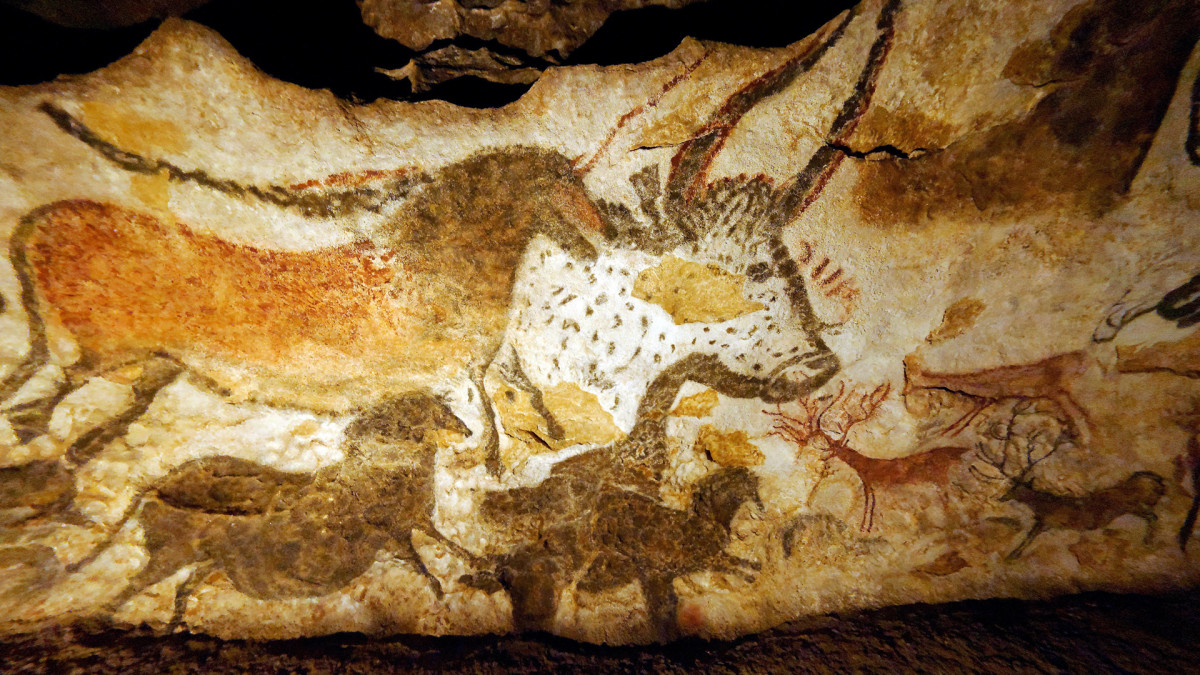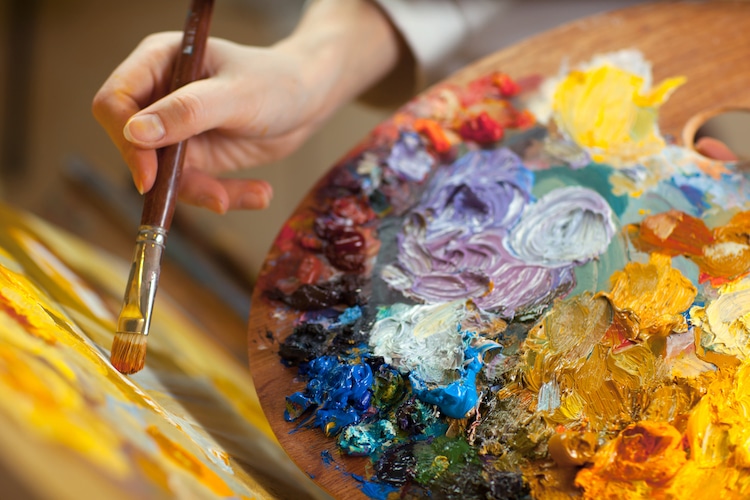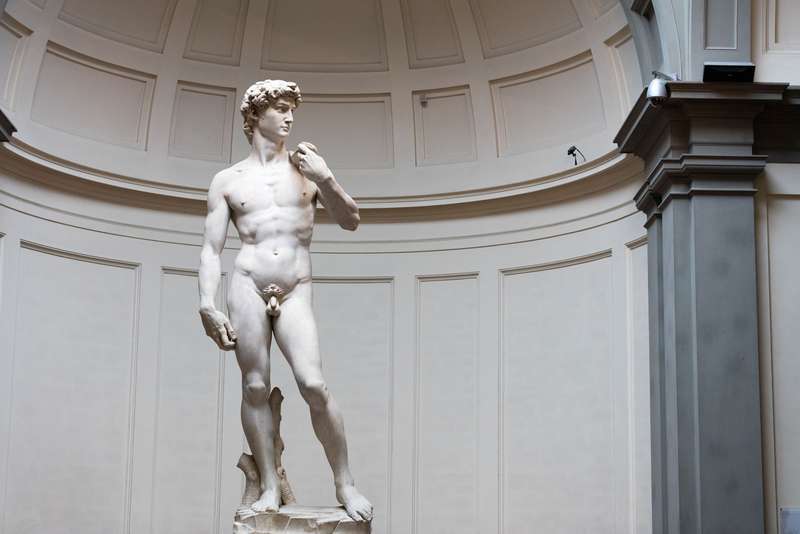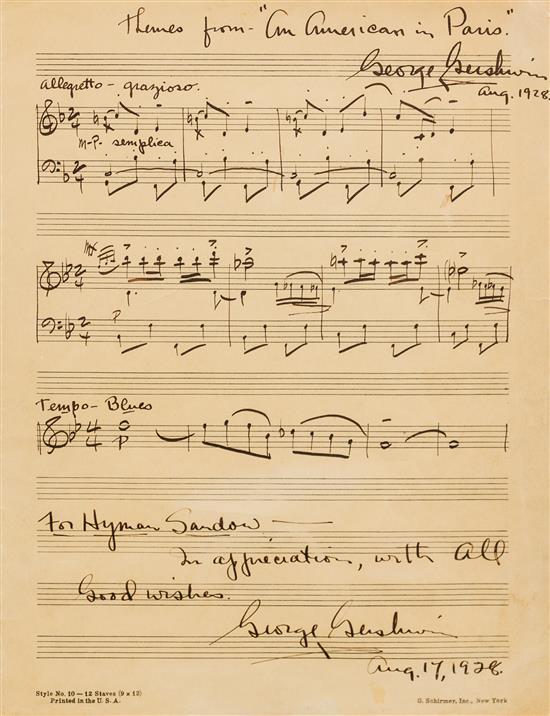Fine Art – an Expression of Aesthetic Imagination
The phrase “art for art's sake” aptly expresses the spirit of fine art, which typically holds more aesthetic appeal than functional value. It is this very characteristic which distinguishes fine art from crafts and applied art, which has a utilitarian focus. Tracing back the history of human civilization, one can find enriching examples of various artifacts crafted for the sole purpose of aesthetics.
What is Fine Art?
According to the aesthetic theories of the Italian Renaissance (15th – 16th centuries CE), fine art is the highest form of art as it allows a wholesome expression of artistic imagination unlike other forms of art that are governed by practical considerations. Another distinguishing factor is the number of people involved in completing the artwork. Fine art is all about a single artist completing a piece or series, whereas applied art and craft involves dividing tasks among people with specialized skills.

Lascaux Cave Paintings from the Upper Paleolithic period / Image: History.com
Prehistoric & Historical Evidence of Fine Art
The foremost evidence of fine art dates back to the Upper Paleolithic period (50,000–10,000 BCE), when human beings started hunting and gathering food. Early humans dwelled in caves. Archeological excavations all over the world indicate cave painting was the earliest form of fine art. One of the interesting facets of fine art in the Paleolithic period was its inherent association with magic and various rituals. Paleolithic artifacts were often symbols of spirits and deities.
This was followed by handcrafted art in the Neolithic period (10,000–3000 BCE). The cave paintings discovered in the Franco-Cantabrian region are abstract and naturalistic images that were used as teaching and learning tools. The cave paintings of Trois Frères, Altamira, Lascaux, and Chauvet portray animal figures. Fine art from the Metal Age, which was the last phase of the prehistoric era, is characterized by the Beaker culture, the truncated pyramid, decorated spears, and swords.
With the arrival of recorded history, the development of writing coincided with fine art. Sculpted seals with text inscribed were the earliest forms of written and fine art. Relief sculpture in stone and wood was the hallmark of Mesopotamian civilization. Architecture also played a key role in the Egyptian period. Marked by structures built with large stone blocks, solid columns, and lintels, this was a phase when funerary monuments, pyramids, sphinxes, and obelisks defined fine art. Painting in this era was used to outline and contrast hierarchical representations between pharaohs and commoners. Excavations of the Indus Valley Civilization give plenty of evidence of detailed figurines in terracotta, bronze, and steatite. Various dancing figurines in gold, terracotta, and stone characterize this period. Other figurines include animals such as bears, cows, dogs, and monkeys. In ancient China, bronze, gold, and jade artifacts were often decorated with stylized taotie motifs.
In ancient Greek culture, fine art focused on the human figure and anthropomorphic gods as key themes. While Greek fine art was simpler in form, Egyptian influence on the Greeks began near the Cycladic islands (3300 and 3200 BCE). Cycladic sculpture lacked all facial features besides the nose. The disintegration of Mycenaean society gave rise to Protogeometric (1050–900 BCE) and Geometric styles (900–700 BCE), primarily geometric paintings on vases. The artifacts from this period were decorated with lines, triangles, concentric circles, and semicircles.
Etruscan art was characterized by figurative terracotta sculpture and wall-painting, while Hittite art was marked by rearranged motifs and canonized images to connect with a mostly illiterate population.
Forms of Fine Art
Oil Painting
The earliest paintings were made with egg tempera. With this technique, egg yolk is mixed with an agent as it dries. Church walls were decorated using liquid myrrh to lend a pleasant odor, especially for worshipers. The egg tempera technique paved the way for oil painting. The earliest oil paintings date back to the 7th century CE, when oil extracted from poppies or walnuts was used to embellish a cave complex in Bamiyan, Afghanistan. However, oil painting on canvases began in the 15th century after the rise of tempera painting techniques.

An artist uses a bright palette of oil paint (Photos: Kuznetcov_Konstantin/Shutterstock)
Oil painting is one of the most widely practiced forms of fine art. Pigments are suspended in drying oils, including linseed oil, walnut oil, poppy seed oil, and safflower oil. The amount of yellowing or drying time depends on the choice of oil. Several oils can be used in the same oil painting to achieve a particular result. Known for its unmatched textural quality, oil painting is practiced using opaque, transparent, and translucent techniques. The consistency of color paste has an important role to play in the quality of oil paints. A smooth paste is required. Turpentine is added to achieve a flowing consistency and a liquid drier is used to speed up the drying process.

The statue of David by Michelangelo / Image © massimo lama/Dreamstime.com
Sculpture
Sculpture is another noteworthy form of fine art. The Great Sphinx of Giza in Egypt is one of the most famous sculptures in the world. Carved in limestone bedrock, the Sphinx measures 66 feet high by 240 feet long. For the early Greeks, the Egyptian style set an artistic foundation with block-like carvings in stone. Sculptures soon gained a realistic look with the increasing use of marble and bronze. The Kritios Boy in marble is one of the best examples of Greek sculpture. Under the Roman Empire, Greek society was polytheistic until 325 CE. Hence, many vintage sculptures depicted Greek gods. The subject of sculpture changed with the rise of Christianity under Emperor Constantine.
The Renaissance period was an age of renewed learning and the rebirth of cultural, political, and artistic ideas. Some of the master sculptors of the Renaissance age included Michelangelo, Leonardo da Vinci, Donatello, and Raphael. A famous anecdote associated with Michelangelo emphasizes the prominence of sculpture in this period. The Italian sculptor, painter, poet, and architect was commissioned to carve the Pietà in 1497. It shows the Virgin Mary grief-stricken over the body of her departed son. After the work was unveiled, Michelangelo realized visitors were giving credit for his piece of work to other artists. One night, Michelangelo snuck into the church where it was displayed and carved “Michelangelo Buonarroti, Florentine, made this” onto the ribbon across the Virgin’s chest. This is the only work of fine art that Michelangelo signed.

The facade of Sheikh Lotfollah Mosque, a masterpiece of the Iranian architecture, built between 1602 – 1619 during the Safavid dynasty (Photo: Athikhom Saengchai via Shutterstock)
Architecture
The world of architecture reflects the richness of various traditions, regional diversity, and splendor of stylization. While Ancient Mesopotamia is known for mud-brick buildings and ziggurats, in ancient Egypt, the idea of the divine drove the everyday lives of people. Many notable Egyptian buildings were reserved for priests and rulers as a result. The Romans developed arches, domes, and vaults, and two widely used motifs: ox skulls and laurels.
The Islamic architecture of Iran draws inspiration from ancient architectural styles. Geometry, calligraphy, and floral motifs are employed to decorate stucco, glazed tiles, and brickwork. Islamic architecture often uses Arabic calligraphy from the Quran. Illustrations of scenes are not depicted as Islam prohibits idol worship. Mosques, tombs, baths, palaces, and forts are strong examples of Islamic architecture. The different architectural styles include Persian, Moorish, Abbasid, Timurid, Moroccan, Ottoman, Mamluk, Fatimid, Mughal, Sino-Islamic, Indo-Islamic, and Afro-Islamic architecture.
Lot 260, George Gershwin, Autographed musical manuscript signed twice ("George Gershwin"), to Hyman Sandow, 17 August 1 / Sold at Hindman for $27,500 in 2018
Poetry & Music
Not only are poetry and music inseparable but the two precede written text. The origins of poetry date back to prehistoric hunting poetry in parts of Africa. Evidence of written poetry in Africa can be seen in the Pyramid Texts from the 25th century BCE. Similarly, the origin of music can be traced to the prehistoric period. Naturally occurring sounds and rhythms gave rise to human music.
The various forms of fine art and their origins give us an insight into the universality of aesthetic expressions and appreciation of beauty in human civilization.
- The Artistry Beneath Your Feet: A Guide to French Art Deco Rugs
- Artist Spotlight: Marco Olivier, Emotion, Movement & Sculptural Expression
- The Timeless Allure of Cameos: Art, History & Auction Highlights
- A Buyer’s Guide to Diamonds: Understanding the 4 Cs
- Artist Spotlight: KAWS, A Contemporary Icon of Street Art and Collecting
- The Golden Art of Ormolu: A History of Gilded Brilliance
- Winter Landscapes, Lineage & Modern Expression
- Artist Spotlight: David Gerstein, Sculptural Pop in Bold Color & Motion
- The History of Rolex Watches: Innovation, Precision, and Enduring Prestige
- Preview the December Doyle+Design Auction: A Celebration of Modern & Contemporary Mastery



 EUR
EUR CAD
CAD AUD
AUD GBP
GBP MXN
MXN HKD
HKD CNY
CNY MYR
MYR SEK
SEK SGD
SGD CHF
CHF THB
THB













